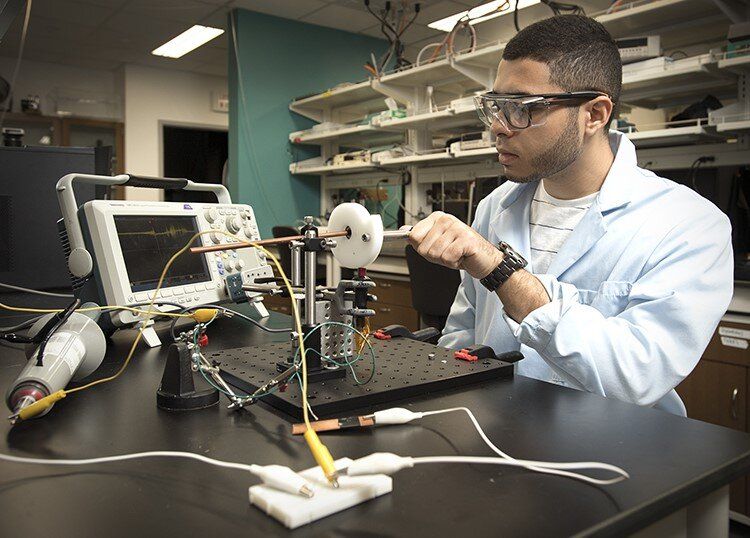This autumn Kotaro Ando, a forty year-old farmer from Tara Town, Saga City (Japan) became the first customer to lease an asparagus picking robot from local agricultural high-tech startup Inaho Co. Ltd. Founded in 2017 and located in the coastal town of Kamakura, Inaho develops robots for agricultural and non-agricultural use. In January 2019, the company opened an office in Kashima (about 110 km from Tokyo) to market their autonomous robot to asparagus and cucumber farmers in Saga City and its surrounding areas. Kotaro Ando was one of these lucky asparagus farmers.
Category: food – Page 221
Mysterious ‘Blob’ With 720 Sexes And Ability To Learn Will Be Unveiled In Paris
The blob is neither animal, plant, nor fungus. The remarkable species can find and digest food, form together with others, and pass on knowledge.
Linking calorie restriction, body temperature and healthspan
Cutting calories significantly may not be an easy task for most, but it’s tied to a host of health benefits ranging from longer lifespan to a much lower chance of developing cancer, heart disease, diabetes and neurodegenerative conditions such as Alzheimer’s.
A new study from teams led by Scripps Research Professors Bruno Conti, Ph.D., and Gary Siuzdak, Ph.D., illuminates the critical role that body temperature plays in realizing these diet-induced health benefits. Through their findings, the scientists pave the way toward creating a medicinal compound that imitates the valuable effects of reduced body temperature.
The research appears in Science Signaling.

Dietary AGE Products Impact Insulin Resistance, Inflammation, And Lifespan
Here’s my latest video!
Cooking foods at temperatures higher than boiling produces advanced glycation end (AGE) products, which induce insulin resistance and inflammation, and shorten lifespan in mice. Similar data exists in humans for the effect of AGE products on insulin resistance and inflammation, and a higher dietary AGE product intake is associated with cancer in both men and women. Accordingly, reducing dietary AGE product intake may be an important strategy for improving health and increasing lifespan in people.

Engineers Genetically Reprogram Yeast Cells to Become Microscopic Drug Factories
Since antiquity, cultures on nearly every continent have discovered that certain plant leaves, when chewed or brewed or rubbed on the body, could relieve diverse ailments, inspire hallucinations or, in higher dosages, even cause death. Today, pharmaceutical companies import these once-rare plants from specialized farms and extract their active chemical compounds to make drugs like scopolamine for relieving motion sickness and postoperative nausea, and atropine, to curb the drooling associated with Parkinson’s disease or help maintain cardiac function when intubating COVID-19 patients and placing them on ventilators.
Now, Stanford engineers are recreating these ancient remedies in a thoroughly modern way by genetically reprogramming the cellular machinery of a special strain of yeast, effectively transforming them into microscopic factories that convert sugars and amino acids into these folkloric drugs, in much the same way that brewers’ yeast can naturally convert sugars into alcohol.

Low-temperature plasma device may lead to more efficient engines
Low-temperature plasmas offer promise for applications in medicine, water purification, agriculture, pollutant removal, nanomaterial synthesis and more. Yet making these plasmas by conventional methods takes several thousand volts of electricity, says David Go, an aerospace and mechanical engineer at the University of Notre Dame. That limits their use outside high-voltage power settings.
In work supported by the U.S. National Science Foundation, Go and a team of researchers conducted research that explores making plasma devices that can be operated without electrical power—they need only human or mechanical energy.
Their paper in Applied Physics Letters introduces a strategy the scientists call “energy-conversion plasma” as an alternative to producing “transient spark” discharges without the need for a very high-voltage power supply.

Think you don’t want to eat insects? Try eating a cricket
But the question a lot of us in Australia might have is, when there are plenty of other protein options, why should we bother eating insects?
Insects are delicious and nutritious and can be grown in shipping containers in the middle of cities and towns. Is it time Australians joined the 2 billion people around the world who eat insects daily?
Farming Metal From Plants Could Be the Future of Sustainable Tech
These plants have evolved to absorb metal from the soil via Seeker.
Forbes 30 under 30 Asia Innovators 2020 from Pakistan Create PakVitae for the World
Rabia Nusrat, an environmental engineering student, Global UGRAD alumni, in her final year at University of Engineering and Technology, UET, Lahore, Pakistan and the first ideaXme public interviewer, interviews Shayan Sohail Sarwar, Forbes 30 Under 30 Asia Innovator and Chief Technology Officer PakVitae.
PakVitae:
PakVitae, founded in 2016, is a multi-million dollar clean water technology startup based in Pakistan.
The organisation’s mission is to provide 10 Million people with access to clean drinking water by 2022. https://www.pakvitae.org through offering the “worlds first ever intrinsically antimicrobial membranes that are biofouling resistant hence are failsafe”. In this ideaXme public interview discover details of their technology, as well as Shayan’s approach to innovation — “there can be no innovation without empathy”. https://www.linkedin.com/in/shayansohailsarwar/
Comment from PakVitae:
“We are a technology company. Our membranes are developed by a team of industry leading experts with decades of proven experience and success in the membrane industry. Applications include municipal water and wastewater treatment, industrial biotechnology, and food and beverage production.